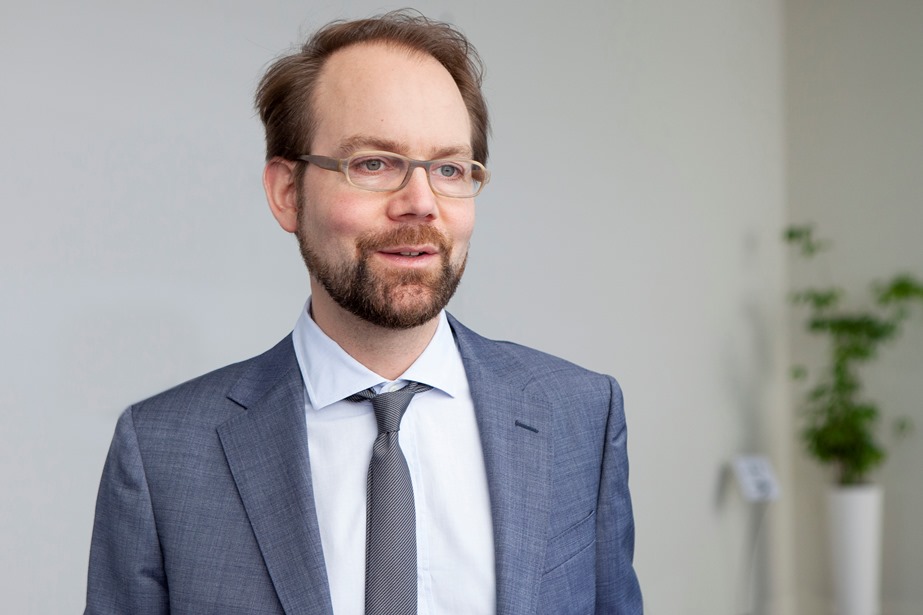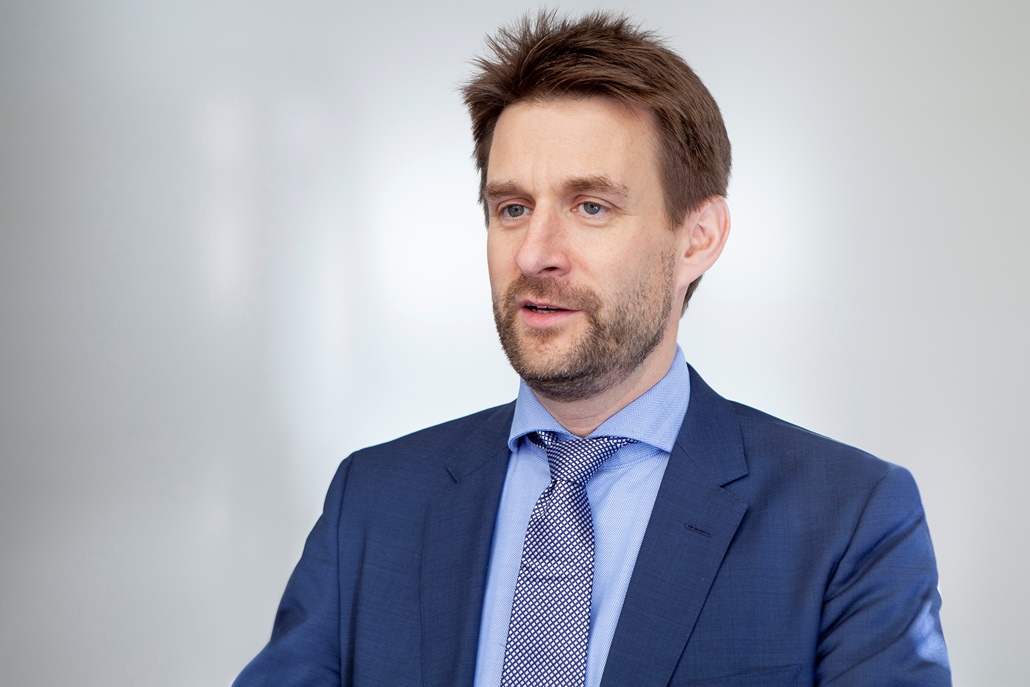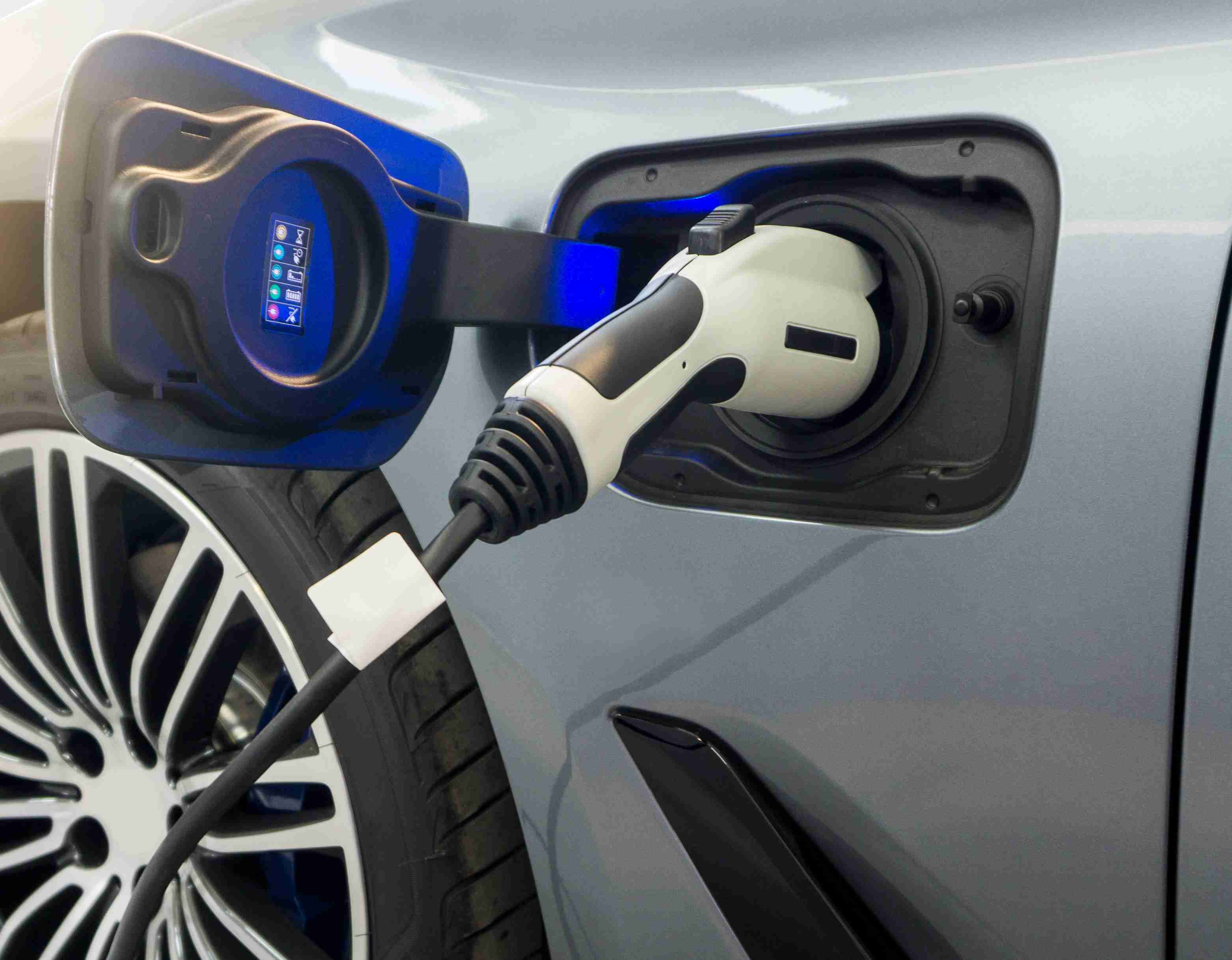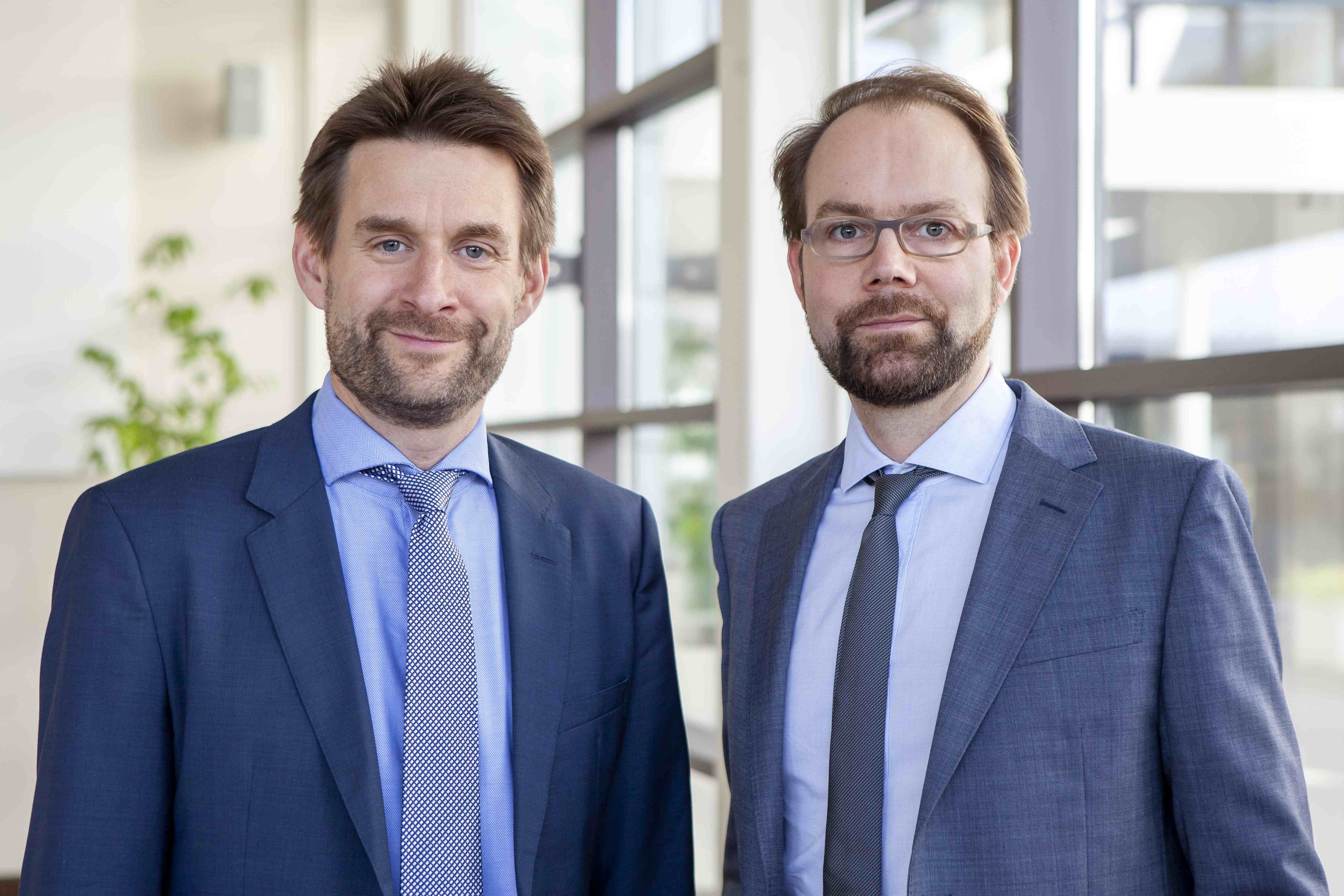Tomas Krämer, research coordinator at the Fraunhofer-Gesellschaft, has always had practical application in mind,
even during his doctorate in solid-state physics. Today, he coordinates the Fraunhofer Next Generation Computing
initiative, which aims to generate fresh momentum in the field of mobility. In this interview with Rüdiger
Quay, Deputy Director of IAF and researcher in the field of power electronics, he talks about innovative concepts
and the path toward »green mobility«.
In conversation with the research coordinator Tomas Krämer
What will the mobility of tomorrow look like?

Which technological innovation in the field of mobility have you found interesting?
Krämer — Mobility itself is fascinating to me! It means overcoming boundaries, freedom and seeing things in a new and different way.
Quay — Seafaring and the associated discovery of the world in the 15th and 16th century. This changed the world very dramatically and it formed the basis for the global trade and cultural exchange that we see today.
What does your own mobility look like?
Krämer — I cycle a lot, to meet my need to do sports, which I generally find difficult to accommodate in my professional life. However, I have to admit that I am a fair weather cyclist! In general, I try to limit my travel and use technology such as telephone and video conferencing instead. It‘s just easier to move a few electrons back and forth than the whole person (laughs).
Quay — I travel a lot professionally and therefore have a high CO2 footprint, which pains me personally. On my many journeys I have seen how the world is changing: droughts in Holland, where as a child I used to stand in wellington boots in the pouring rain. In my private life I use my bike whenever possible.

How is Fraunhofer IAF paving the »way ahead« in the field of mobility?
Quay — We are researching gallium nitride (GaN) for effective voltage conversion and efficient power supply. GaN is already used in cars today in various converters because it is small and compact. It is also being evaluated for converters in engines. This would mean that converters, which are currently very large, could become smaller and would no longer have to be water-cooled. And that would make cars lighter. In addition, we are researching higher voltages up to 1200 V, because that would be even more efficient. For this, however, the material system has to be further developed, as there are currently no cost-effective GaN substrates available.
Krämer — When you look under the hood at Fraunhofer IAF, you see many points of contact with mobility. An essential part of the added value of a car is not the powertrain and the driver's cab, but the sensors, communication and electronics. That's where IAF is strong. In the short term, I see IAF's millimeter-wave devices as a good opportunity to advance driver assistance and networked driving – right up to autonomous vehicles. IAF's power electronics are particularly energy-efficient and yet high-performance, meaning that they are predestined for mobility. In the medium term, diamond can serve as a new power electronic material. And the topic of the future is clearly quantum computing, which makes intelligent logistics possible.
What do you think the revolution will be: the engine of the future or autonomous driving?
Quay — We have to be honest about the drive concept: Mobility will always cost energy. The combustion engine is an amazing concept that cannot simply be replaced. I am in favour of electric mobility. We have to build networks, because an electromobilty station will then need several 10 megawatts. And we need to make wind power in the north usable for us. The fuel cell can also be a great help. But a lot more research is needed to make it safe and compact for everyone.
Krämer — Electromobility is also my answer. It has been around for some time, but there is still a lot of potential behind it. We have to succeed in providing electrical energy from renewable sources. We have to build intelligent networks. All in all, I believe that the way forward for Germany is a combination of networked and intelligent mobility.
Quay — I also like car sharing. That makes sense if you only need half a car. There are simply too many empty trips. I don't think that we will all be driving autonomously soon, but an intelligent network can give us a lot of help through smarter management and planning, because as people we get tired, especially when we drive long distances.

How could Next Generation Computing be of help?
Quay — Neuromorphic and quantum computers are capable of solving more specific problems than our classic computers. Our computers are very flexible, but they need too much energy to solve complex problems. This could be improved by giving up flexibility on the chip so that it solves certain problems faster and more efficiently, i.e. with less energy. We need this performance in order to ensure we provide the required computing power in real-time situations with highdensity traffic efficiently. Today, this can only be achieved with very high amounts of energy.
Krämer — Autonomous driving and intelligent logistics present us with extremely complex problems. Neuromorphic and quantum computers can bring us a significant step forward. In our next generation computing initiative, we are pursuing these two topics. That's why I advocated this early on in the Fraunhofer Group for Microelectronics and then in the Research Fab Microelectronics Germany.

What do you think mobility will be like in 20 years?
Krämer — Much more electromobile, much more intelligent. Maybe mobility will also become less important again, because we'll be able to solve a lot of issues through virtual communication. And if you do have to drive, it will be efficient and emission-free.
Quay — I'm a big advocate of electric powertrains for aircrafts. That would be a big breakthrough. For this we need better storage and drives. Renewable energy as a source would be a big step forward. I have to fly often, but the introduction of climate-unfriendly gases into the stratosphere is of course critical. Hydrogen could be a solution, but it is still a tough nut to crack for research.
What would you like to invent on the way into the future?
Krämer — A great discovery is less appealing to me than the successful implementation of important topics that we have been pursuing for a long time. We have been talking about intelligent networks for 20 years, but we have not yet put them into practice. In this sense, my dream would be to bring artificial intelligence, quantum computers or sustainable mobility into our everyday lives.
Quay — I feel the same way. If I could wish for something, it would be a technology that can efficiently wash CO2 out of the atmosphere on the basis of renewable energies. Then we could stop climate change.
-----------
Dr. Tomas Krämer received his doctorate in the field of solid state physics and works as research coordinator at the Fraunhofer-Gesellschaft. He is the institute supervisor of Fraunhofer IAF and coordinates the Fraunhofer Next Generation Computing Initiative. Dr. Rüdiger Quay joined Fraunhofer IAF as a scientist in 2001, headed the RF measurement technology group and finally the business unit power electronics. Since 2018 he is deputy director of Fraunhofer IAF and responsible for all business units.
 Fraunhofer Institute for Applied Solid State Physics IAF
Fraunhofer Institute for Applied Solid State Physics IAF